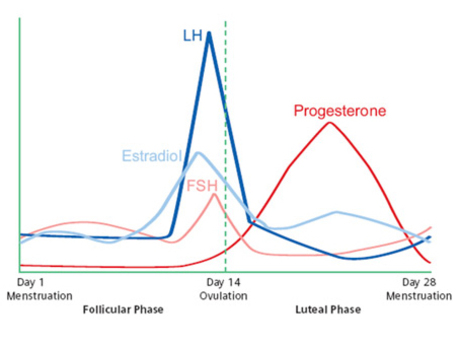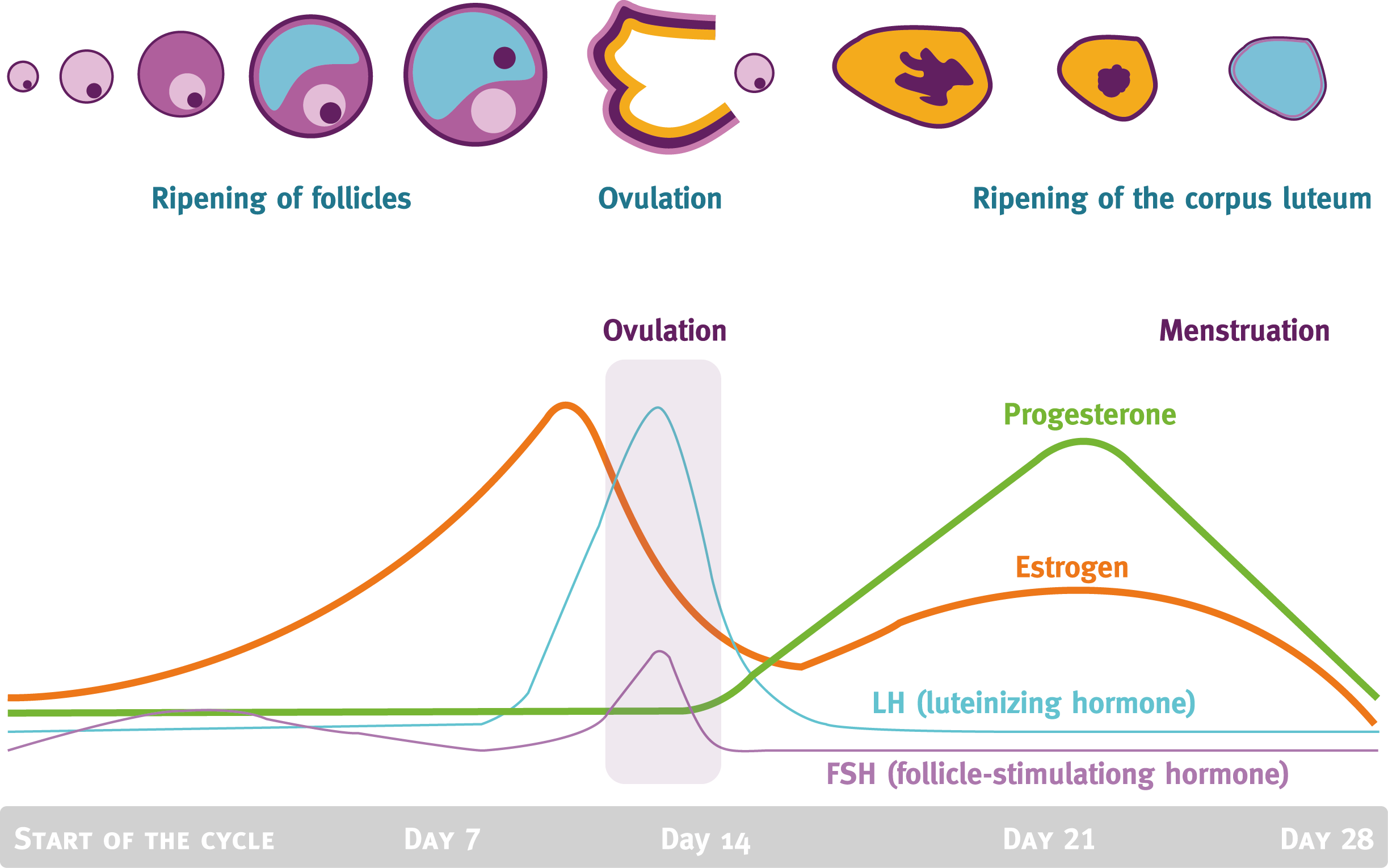That time of the month for a woman can be a roller coaster ride of emotions. Tears and anger can come on in the blink of an eye for no apparent reason. However, there is a reason. Menstrual cycle hormones can throw you into a tizzy without any notice. You can be fine one minute, upset the next.
This all happens for a very good reason and if you understand what your hormones do at each phase of your cycle, you will better understand the moodswings. This article will help you understand how the female reproductive process works and why you have to go through all of these changes every month.
Menstrual Cycle Hormones
Menstrual cycle hormones exist for a reason. A good one. They are there so you can have a baby. With this comes a lot of inconvenience, but a lot of joy can come from it in the long run. The shifts during your cycle of 28 days all have a purpose. If you feel cuddly and sexy mid-cycle, it’s ovulation time or the right time to conceive a baby. If you feel cranky and bad right before your period, it probably isn’t a good time for cuddles and sex. Especially if you are on your period. Let’s take a closer look at your cycle broken down:
In The Beginning
When you were born, you already had all the eggs in your ovaries for your entire life, only about 500 will be ovulated during a woman's reproductive lifetime. As you entered the stage of puberty, your body began to produce the hormones you needed to mature those eggs and prepare you to start your first period. You then will have a period every month until you go through menopause.
The first hormone your body releases is the Follicle Stimulating Hormone (FSH) which stimulates the eggs in your ovaries to start getting ready to be released. This happens in the first week (Day 1 through 7) of your cycle. Your body also releases Luteinizing Hormone (LH) to further mature your eggs.
During the second week of your cycle (Day 8 through 13) your mature eggs begin to release the hormone Estrogen.This helps completely ripen the eggs and get them ready to be released. This will also help the lining of your uterus to become thicker in case a fertilized egg needs to nestle in to its new home for the next 9 months. This heightened estrogen at times may make you feel a bit “on edge” but towards Day 14 you may start to feel a bit cuddly and sexy. This is because your body is releasing more of the Luteinizing Hormone (LH) and a new hormone Luteinizing Hormone Releasing Factor (LH-RF) which causes a huge surge of LH and you release the ripened egg or eggs.
The Middle of your Cycle
Around day 14 of your cycle, this surge of LH causes you to release an egg. You may feel cuddly and sexy, but also a bit crampy when the egg is released. The increased hormones also make the mucous around your cervix very thin and stretchy. This will help to “grab” the sperm and give it a ride up to your mature egg.
Your body then begins to produce more estrogen and now progesterone that will help maintain a pregnancy if your egg becomes fertilized. The progesterone encases the lining of the uterus in mucous to help keep the egg implanted. If the egg does not get fertilized then everything will start breaking down, hormones shut down and the uterine lining gets ready to shed.
The End to the Beginning Again
The end of your cycle is the shedding of the uterine lining that built up. This is your monthly period. This is also the beginning of your cycle, again and starts you over at Day1. Once you start your period, your body is already gearing up to release another mature egg.
There is another chemical in your body during your period that causes even more misery. These are called Prostaglandins. These chemicals cause the pain during your period such ascramping, pain in your lower back, pain down your legs, headaches, and sore breasts. This hormone is also one of the causes of mood swings and crankiness during your period.
And it all starts over again…….

Tips to Handle Changes in Menstrual Cycle Hormones
There are things you can do to handle all the changes in menstrual cycle hormones and ease any discomfort. These are all natural ways to help improve your moods and relieve cramping. Try:
- Getting some exercise. Increasing blood flow and oxygen to your pelvic area can help. Exercise can also improve your moods and sleep as the menstrual cycle hormones shift during the month.
- Watch what you eat. Red meat (non-grass fed beef) and milk can contain hormones that add to hormonal issues. Excess carbohydrates and sugars can increase mood swings due to sugar highs and lows, decrease the sugar and carbs you eat. Avoid soy products, they contain a phyto-estrogen that can increase estrogen levels and symptoms. Increase fresh fruits and vegetables, nuts, seeds, and whole grains.
- Reduce caffeine. If you have bad cramping, caffeine can increase pain to the pelvic area.
PMS: Imbalances of MenstrualCycle Hormones
PMS (Premenstrual Syndrome) is an issue with the estrogen and progesterone in your body. Many women have excessive emotional issues just before their period that tend to go away when they start their period. The symptoms includecranky mood, anxiety, depression, and mood swings. The hormonal cause is as follows:
- Progesterone Excess – Depression, fatigue, and sadness.
- Estrogen Excess – Crankiness, anxiety, insomnia.
There is another kind of PMS that causes increase cravings for sugar, carbohydrates, headaches and increased fatigue. This kind of PMS has to do with the hormone Insulin, which lowers the body’s blood sugar levels. If you feel you have this kind, always eat protein with carbohydrates and increase the complex carbs in your diet to prevent blood sugar spikes and crashes.
Menopause: The End of Menstrual Cycle Hormones
During the remaining 6 months to 5 years before your periods end for good, your menstrual cycle hormones will begin to go through changes. This is what we hear called, “the change.” It usually occurs around the age of 40 to 60 years old and is a decrease in menstrual cycle hormones.
During this time you may experience things like hot flashes, excessive bleeding, missed periods, migraine headaches, and severe mood swings. As the hormones wane and after the last period (it’s official when you haven’t had a period for a year) the symptoms will improve, but can still occur occasionally.
Some women choose to take replacement hormones to help with symptoms, but there are many natural alternatives that can help like soy estrogen and black cohosh. Ask your doctor for any recommendations to avoid interactions.
